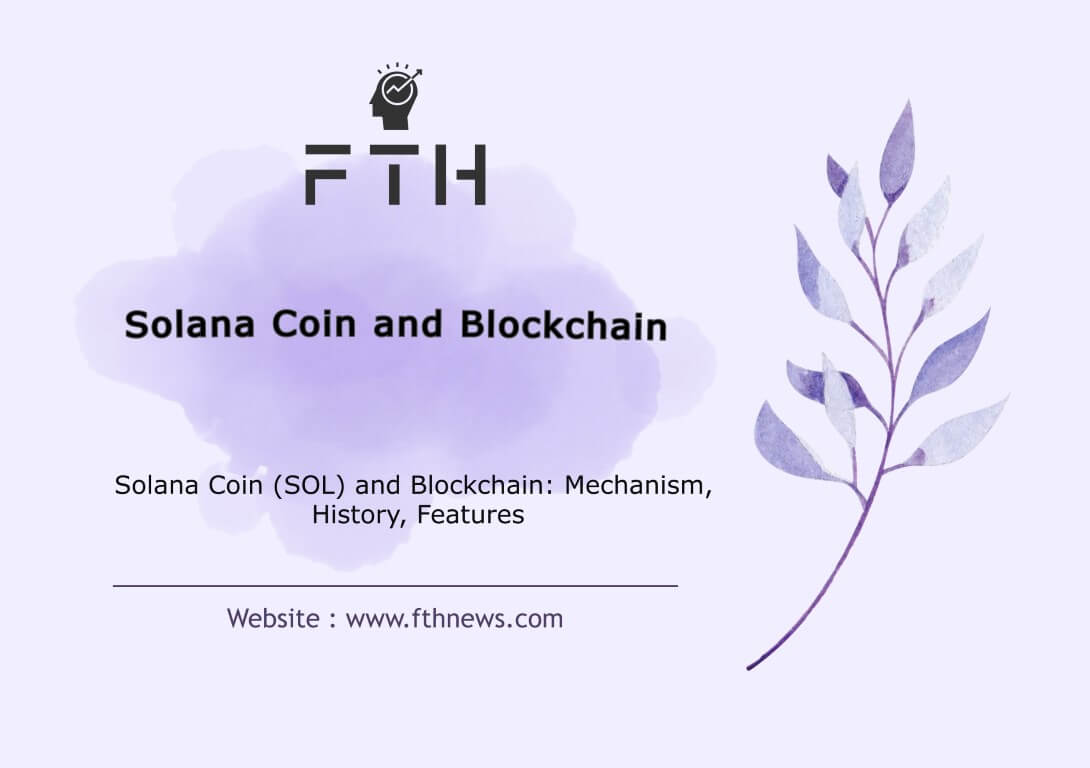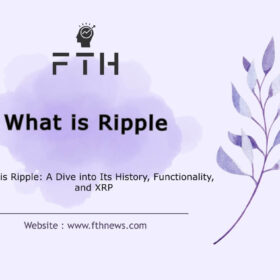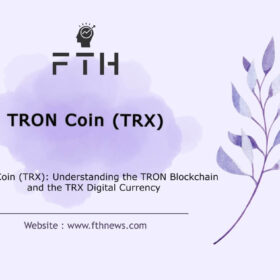
What Is Solana (SOL) Coin and Blockchain: Mechanism, History, Key Features
Solana is a high-performance blockchain designed to support smart contracts and decentralized applications. In 2017, Anatoly Yakovenko, the founder and CEO of Solana, discovered that Bitcoin’s hash function, SHA256, could be utilized to create a decentralized timing method in a cryptocurrency blockchain.
The native currency of the Solana blockchain is SOL ( Solana Coin ), which is used for various purposes within the network, including transaction fees, staking, and participating in decentralized applications.
What is Solana?
The Solana network is a decentralized, secure, and scalable ecosystem designed to be a robust platform for decentralized applications (Dapps). Positioned as a significant competitor to Ethereum, Solana’s rapid transaction speed, strong smart contract support, and exceptional scalability make it a standout player in the blockchain space.
The network’s ability to process over 50,000 transactions per second positions it as a formidable challenger to industry giants like PayPal and MasterCard. Solana’s support for smart contracts allows it to host a diverse range of decentralized applications, resembling Ethereum but with heightened efficiency. The network’s widespread acceptance is evident, with over 400 active projects contributing to its growing ecosystem.
Understanding Solana
Solana, with its decentralized and secure features, has rapidly emerged as a leading platform for Dapps. Its strengths lie in rapid transaction processing, robust smart contract support, and exceptional scalability, addressing key challenges faced by traditional blockchains.
With a capacity to handle over 50,000 transactions per second, Solana competes effectively with established payment giants. Similar to Ethereum but more efficient, Solana’s ecosystem hosts a variety of decentralized applications, garnering widespread acceptance from industry experts and developers. The network’s evolution over a decade reflects the broader trend in blockchain technology, empowering users with swift and decentralized transactions.
Understanding the Solana Blockchain
Solana stands prominently among renowned blockchain networks, hosting a diverse array of over 400 projects, ranging from games to NFT programs. At the core of its functionality is the native digital currency, SOL, which not only facilitates transactions but also fortifies the network’s strength and security through staking.
For those delving into the intricacies of the Solana blockchain, the term SPL may have caught your attention, denoting SOL Program Library. This token writing standard imposes specific rules and regulations governing the creation of tokens on the Solana network platform. Adhering to these standards ensures a seamless and standardized approach to token creation within the SOL ecosystem. As Solana continues to evolve, SPL plays a pivotal role in maintaining consistency and reliability across the diverse range of projects flourishing on the network.
Solana’s Mission and Token Standard
Solana’s primary goal is to expedite decentralization across various domains. The network’s widespread popularity among developers, businesses, and investors can be attributed to its minimal transaction fees, rapid transaction verification, and commitment to decentralization.
Within the Solana ecosystem, SPL (Solana Program Library) serves as the token creation standard, comparable to Ethereum’s ERC standard. SPLs define the virtual tokens created on the Solana network. Token creation on SOL is facilitated using programming languages such as Rust, C, and C++.
Solana’s Technical Framework and Tokenomics
Solana operates on the Proof of Stake consensus protocol, with its native token named Sol (SOL). The network follows a unique tokenomics model where 8% is added to the total number of network tokens annually. However, this increase is mitigated by a 15% deduction, serving as an inflation reduction rate each year, which persists for approximately a decade. After this period, Solana’s annual inflation stabilizes at 1.5%.
Solana employs a multi-layered approach, with each layer handling specific aspects of network operations. This design categorizes Solana as a hybrid network, showcasing its versatility and efficiency in managing diverse functionalities within its ecosystem.
Solana’s Operational Mechanism
Understanding how Solana operates can be complex due to its sophisticated technology, but using the SOL token on this blockchain doesn’t require a deep dive into its technical intricacies.
In the Solana network, blocks, the fundamental components of any blockchain, are referred to as slots. These slots are created by a specific validator known as a leader within each network cluster. Each cluster has a singular validator responsible for adding blocks or slots to the blockchain ledger.
To enhance speed and efficiency, Solana employs Proof of History. This innovative technology allows users to create a chronological series of records, acting as confirmation for determining the exact timeline of events. Utilizing Proof of History streamlines the Solana network, eliminating the need for time-consuming consensus on timestamps.
Proof of History serves as a global timestamp reference on the Solana network, aimed at ensuring network security without compromising speed. Transactions and network events undergo hashing with the SHA256 hash function, creating a unique and practically unguessable output. This hashed output becomes the input for the next hash, forming an unbroken chain of hashed transactions.
This process enables validators to add transactions and events to a block without relying on conventional timestamps. The hashing process is timed, allowing validators to easily determine the elapsed time. In simple terms, each node in Solana operates on its clock, eliminating the need for unanimous agreement among nodes for transaction confirmation.
To illustrate this complex process, consider three transactions, “A,” “B,” and “C.”
The Proof-of-History protocol would hash these transactions with corresponding timestamps, creating a standardized and objective record for all network participants. This efficiency contributes to Solana’s remarkable transaction processing capacity of 50,000 transactions per second, a significant leap compared to Bitcoin’s 5-7 transactions per second.
In Solana, the leader assumes the responsibility of building blocks, and leaders change at predefined intervals to inform nodes of the next leader. Unlike Bitcoin, where timestamps rely on miner’s local time, Solana eliminates this dependency through Proof of History, establishing time as a global principle within the network.
Despite its advantages, Proof of History does have drawbacks. Becoming a validator in Solana requires relatively powerful hardware, limiting who can participate. Additionally, the high transaction volume poses challenges, with 40 petabytes of data expected to be stored on the blockchain annually. Solana addresses this by introducing archivers, a solution described in detail below.
Solana’s History and Core Team
Solana’s roots trace back to 2017 when Anatoly Yakovenko embarked on the project. Collaborating with former Qualcomm colleagues Greg Fitzgerald and Stephen Akridge, Solana Labs, the company we recognize today, was established.
Anatoly Yakovenko, now the Co-founder and CEO of Solana Labs, initiated the Loom project alongside Akridge and Fitzgerald, joined by a team of experts from Apple and Qualcomm. To differentiate from a similarly named project on Ethereum (Loom Network), they rebranded their endeavor as Solana.
The core team includes Eric Williams, serving as Chief Scientific Officer, Greg Fitzgerald as Chief Technology Officer, and Raj Gokal as Chief Operating Officer—each playing a crucial role in Solana’s development. During a three-month funding round, Solana’s limited token sale raised a substantial $20 million.
The beta version of Solana’s mainnet launched in March 2020, attracting an additional $1.76 million through a public auction on the CoinList platform. During this phase, the focus was on transaction capabilities and essential tools, with staking rewards yet to be introduced, pending the determination of SOL token supply timing.
Solana Labs remains at the forefront of the network’s evolution, supported by the Solana Foundation, a vital institution providing essential funds for ongoing development and growth.
Key Features of Solana
Solana stands out in the blockchain landscape with its innovative features, built upon eight core technologies:
1. Proof of History:
- Solana addresses the challenge of untrustworthy timestamps with its Proof of History model.
- It provides a secure, encrypted resource, acting as a network-wide time reference.
- This verifiable delay function enhances transaction verification speed by allowing nodes to build the next block without extensive coordination.
2. Turbine:
- Turbine serves as a connection protocol between validators in Solana.
- Similar to BitTorrent but optimized, Turbine divides transmitted blocks into small packets, overcoming bandwidth challenges.
3. Byzantine Fault Tolerance Tower:
- Solana employs Byzantine Fault Tolerance Tower as a consensus mechanism, specifically a Practical Byzantine Fault Tolerance variant.
- Coupled with Proof of History, it establishes consensus efficiently, avoiding the need for extensive processing, resulting in faster transaction verification.
4. Gulfstream:
- Enabling a capacity of 50,000 transactions per second, Gulfstream streamlines block verification processes.
- Nodes operate under a leader, facilitating transaction execution ahead of time and reducing verification time.
5. C-Level:
- Solana introduces C-Level, allowing users to execute multiple smart contracts simultaneously.
- Described as a type of virtual machine, C-Level schedules transactions without executing them within the virtual machine.
- Solana is unique in supporting parallel execution of transactions on a shard, setting it apart as a multi-threaded blockchain.
6. Sealevel:
- Sealevel, Solana’s innovation, represents a milestone in scalability.
- It enhances network scalability and supports efficient processing of a large number of transactions.
7. Pipelining:
- Solana leverages pipelining to optimize transaction processing.
- Pipelining allows for the parallel execution of various stages of transaction verification, significantly improving overall speed.
8. Cloudbreak:
- Cloudbreak is an integral part of Solana’s design, ensuring seamless network operation.
- It contributes to Solana’s reliability and resilience, providing stability even in challenging network conditions.
9. Archivers:
- Solana introduces Archivers to address the challenge of high transaction volume.
- These Archivers play a crucial role in storing and managing the substantial amount of data generated by Solana’s high-speed transactions.
Solana’s distinctive features collectively contribute to its position as a high-performance blockchain, offering speed, scalability, and innovation in the rapidly evolving blockchain landscape.
Solana Wallets
Storing your SOL tokens securely requires a reliable wallet. Solana, being widely popular, offers several noteworthy wallet options. Here are some of the prominent wallets for SOL tokens:
1. Phantom Wallet:
- One of Solana’s primary wallets, Phantom is user-friendly, making interactions with the Solana network straightforward.
- Besides SOL tokens, Phantom supports other tokens within the Solana ecosystem, including SPL tokens.
- Features include participation in Solana staking, compatibility with Ledger Nano X, and the ability to use decentralized Solana applications.
- Phantom Wallet provides users with their private keys, ensuring a reasonable level of security.
2. SolFlare:
- SolFlare is a web-based wallet designed for Solana, offering ease of use and compatibility with hardware wallets.
- Users can securely store their tokens in SolFlare, similar to Phantom Wallet.
3. Math Wallet:
- Math Wallet stands out as a versatile wallet supporting Solana, along with other digital currencies like Binance Coin, Bitcoin, and Ethereum.
- Easy integration with hardware wallets adds an extra layer of security to Math Wallet.
Security Reminders:
- When using digital currency wallets, prioritize safety. Always create a backup of your wallet.
- Most digital wallets provide 12 recovery words (in English). Safely store these words; they serve as a crucial backup. Losing them or deleting the backup renders your assets inaccessible.
Selecting a wallet that aligns with your preferences and adheres to safety practices ensures a secure and convenient experience when managing your SOL tokens on the Solana network.
How to Stake Solana: A Step-by-Step Guide
Staking SOL tokens on the Solana network, a proof-of-stake blockchain, is a strategic way to participate in network validation and earn rewards. Here’s a simple guide on how to stake SOL and maximize your potential profits:
Choose a Staking-Friendly Wallet:
Initiate the staking process by transferring your SOL tokens to a wallet that supports staking. Notable options include Ledger Nano S, renowned for its security features.
Create a Staking Account:
Proceed to create a dedicated staking account. It’s important to note that the address generated for staking is distinct from your regular wallet address.
Select a Network Validator:
Explore the available network validators and make an informed choice. Validators are crucial as they process transactions and manage the network. The larger their staking value, the higher the likelihood of them adding transactions to the blockchain.
Delegate Your Staking Account:
Once a validator is chosen, delegate your staking account to them. Validators often incentivize token holders by sharing rewards. They might take a commission, but the majority of the reward is distributed among those who entrust their tokens.
By following these steps, you actively participate in the Solana network, contribute to its security and decentralization, and, in return, have the potential to earn rewards through staking SOL tokens.
Solana’s Overview of Strategic Partnerships
Solana’s impactful collaborations extend across diverse industries, showcasing the network’s versatility and commitment to enhancing blockchain ecosystems. Here are some of Solana’s notable partnerships:
Civic:
Civic, a decentralized authentication ecosystem, has strategically partnered with Solana. This collaboration is poised to offer cost-effective authentication solutions, particularly beneficial for countries lacking robust infrastructure. By integrating Civic with Solana, the network aims to facilitate secure and accessible authentication processes.
Hummingbot:
Solana has joined forces with Hummingbot, an open-source trading software client. This collaboration is anticipated to bolster liquidity within the Solana network, enhancing the overall trading experience for users. The partnership with Hummingbot underscores Solana’s commitment to fostering a dynamic and liquid trading environment.
Chainlink:
Chainlink, a decentralized oracle network, collaborates with Solana to establish a common oracle for Binary Options trading. By securely providing smart contracts access to off-chain data, payments, and more, Chainlink enhances Solana’s capabilities in the rapidly evolving world of decentralized finance (DeFi). This collaboration positions Solana at the forefront of innovative solutions in the blockchain space.
Akash:
Solana’s integration with Akash, a platform dedicated to open and permissionless cloud service architecture, offers users a seamless pathway to develop powerful and cost-effective servers. This collaboration empowers users to run nodes or upgrade their applications with ease. The integration of Akash with Solana reflects a shared vision for accessible and scalable cloud services within the blockchain ecosystem.
Solana’s strategic collaborations underscore its commitment to creating a robust and interoperable blockchain infrastructure, fostering innovation, and addressing real-world challenges across various sectors.
SOL Digital Currency on the Solana Blockchain
Solana’s native coin, SOL, is the driving force behind the network’s functionalities. As the native coin of the SOL blockchain, SOL facilitates the staking process, enhancing the network’s strength and security. It serves a multi-faceted role, being utilized for executing smart contracts, conducting transactions, and powering various programs and applications within the SOL ecosystem.
Use Cases of SOL: Beyond Transactions
SOL is not merely a transactional currency. Its utility extends to participation in various programs and applications on the SOL platform. For instance, in programs like Chainvote, users can engage in voting or governance activities using SOL.
Supply Distribution of SOL: Transparency and Allocation
The distribution of SOL digital currency is a structured process, ensuring fairness and transparency within the cryptocurrency market:
- Initial Sale Stage (Seed Sale): 16.23% of the total supply.
- Initial Investors (Founding Sale Investors): 12.92% of the total supply.
- Validators: 5.08% of the currency.
- Strategic Investors: 1.88% of the digital currency.
- CoinList Auction: 1.64% of the total supply.
- Team Members: 12.79% of SOL coins.
- Solana Foundation: 10.46% of the total supply.
- Community Managed by Solana Foundation: 38.89% of the currency.
Advantages and Challenges of Solana Network
Advantages:
- High Speed: Solana boasts remarkable transaction speed.
- Scalability: The network is highly scalable, accommodating a diverse range of projects.
- Staking and Rewards: Users can stake SOL, earning rewards and contributing to network security.
- High Security: Solana prioritizes security, ensuring a robust and resilient network.
- Low Fees: Transaction costs on Solana are notably low.
Challenges:
- Fewer Projects than Ethereum: While growing, Sol still has fewer projects compared to Ethereum.
- High Cost of Hardware: Setting up high-quality hardware for validators can be resource-intensive.
Comparing Solana with Ethereum: Unique Consensus Mechanisms
Solana and Ethereum employ distinct consensus mechanisms, with Ethereum utilizing Proof of Work (PoW) and Solana utilizing Proof of History (PoH). While Ethereum excels in decentralization, Solana outperforms in speed, presenting a nuanced landscape for comparison.














